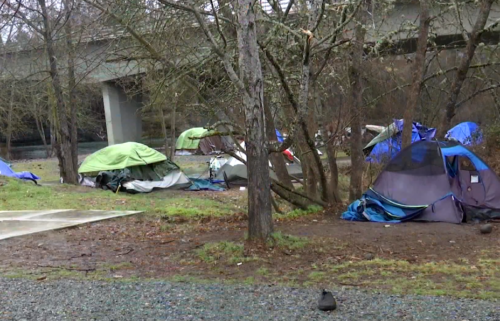CDC: Avoid travel to this ‘very high’ risk Indian Ocean island

El Prado Museum is a huge draw in Madrid
By Forrest Brown and Marnie Hunter, CNN
The US Centers for Disease Control and Prevention added just one new destination to its highest-risk category for travel on Monday — and it’s again an Indian Ocean island nation.
Moved up to Level 4 is Madagascar. Off the southeastern coast of Africa, it’s known for its unique wildlife, including lemurs, and for being the world’s fourth-largest island.
Last week, the much smaller Indian Ocean island nation of Mauritius was the only destination added to Level 4. It remained at Level 4 this week, too.
The CDC places a destination at “Level 4: Covid-19 Very High” risk when more than 500 cases per 100,000 residents are registered in the past 28 days.
Madagascar resided at “Level 3: Covid-19 High” risk last week.
There are now about 120 destinations at Level 4. While the number of places in the “very high” risk category has been dropping since peaking around 140 in February, there are still more places in the Level 4 category than in all the other categories combined.
To recap, only new addition to Level 4 on March 21:
• Madagascar
CDC: Avoid Level 4 destinations
The CDC advises avoiding travel to Level 4 countries. CDC thresholds for travel health notices are based primarily on the number of Covid-19 cases in a destination.
The CDC does not include the United States in its list of advisories, but it was color-coded at Level 4 on March 21 on the agency’s map of travel risk levels.
Tourist favorites stalled on Level 4 include Aruba, Brazil, Canada, Egypt, France, Greece, Peru and Spain. The United Kingdom has been there since July 2021.
You can view the CDC’s risk levels for any global destination on its travel recommendations page.
In its broader travel guidance, the CDC has recommended avoiding all international travel until you are fully vaccinated.
Changes at Level 3
The Level 3 “high” risk category — which applies to destinations that have had between 100 and 500 cases per 100,000 residents in the past 28 days — saw five additions on Monday — from spots scattered around the world. They were:
• Albania
• Bolivia
• Botswana
• Colombia
• Guyana
The move to Level 3 was good news for the quintet, all of which were at Level 4 last week. Colombia in particular has been emerging as a popular travel destination in recent years, including its cosmopolitan capital of Bogotá.
Levels 2, 1 and unknown
Destinations carrying the “Level 2: Covid-19 Moderate” designation have seen 50 to 99 Covid-19 cases per 100,000 residents in the past 28 days. The four new entries to Level 2 on March 21 are:
• Guinea
• Guinea-Bissau
• Morocco
• Nepal
All four had been at Level 3, including the big tourist favorite of Morocco.
For people interested in cruise ship travel, it’s currently at Level 2 as well.
To be in “Level 1: Covid-19 Low,” a destination must have fewer than 50 new cases per 100,000 residents over the past 28 days. Six places moved to Level 1 on Monday:
• Cameroon
• Cape Verde
• Gabon
• The Gambia
• Mozambique
• Democratic Republic of Congo
The Democratic Republic of Congo fell the most, all the way from Level 4. Cape Verde had been at Level 3. And the rest had been at the “moderate” Level 2.
Africa continues to be a bright spot on the current Covid map, as all six of those are located there.
Overall, there are now 30 destinations at Level 1, and all but three (China, Saba and Taiwan) are in Africa. That includes Kenya, a favorite of safari-goers.
Finally, there are destinations for which the CDC has an “unknown” risk because of a lack of information. Usually, but not always, these are small, remote places or places with ongoing warfare or unrest. The CDC made no new additions to the category on Monday.
Cambodia, the Canary Islands, Macau and Tanzania are among the more-visited locations currently listed in the unknown category. The CDC advises against travel to these places precisely because the risks are unknown.
A medical expert weighs in on risk levels
Transmission rates are “one guidepost” for travelers’ personal risk calculations, according to CNN Medical Analyst Dr. Leana Wen.
“We are entering a phase in the pandemic where people need to make their own decisions based on their medical circumstances as well as their risk tolerance when it comes to contracting Covid-19,” Wen said in mid-February.
“You should interpret Level 4 to mean this is a place with a lot of community transmission of Covid-19. So if you go, there is a higher chance that you could contract the coronavirus,” said Wen, who is an emergency physician and professor of health policy and management at the George Washington University Milken Institute School of Public Health.
Some people will decide the risk is too high for them, Wen said. “Other people will say, ‘Because I am vaccinated and boosted, I am willing to take on that risk.’
“So this really needs to be a personal decision that people weigh understanding that right now the CDC is classifying the different levels based on community transmission rates, and basically only that,” Wen said. “They’re not taking into account individual circumstances.”
More considerations for travel
There are other factors to weigh in addition to transmission rates, according to Wen.
“The transmission rates are one guidepost,” Wen said. “Another is what precautions are required and followed in the place that you’re going and then the third is what are you planning to do once you’re there.
“Are you planning to visit a lot of attractions and go to indoor bars? That’s very different from you’re going somewhere where you’re planning to lie on the beach all day and not interact with anyone else. That’s very different. Those are very different levels of risk.”
Vaccination is the most significant safety factor for travel since unvaccinated travelers are more likely to become ill and transmit Covid-19 to others, Wen said.
“People who are unvaccinated remain at high risk and really should not be traveling at this point,” she said.
People should be wearing a high-quality mask — N95, KN95 or KF94 — anytime they’re in crowded indoor settings with people of unknown vaccination status, she said.
And it’s also important to consider what you would do if you end up testing positive away from home. Where will you stay and how easy will it be to get a test to return home?
The-CNN-Wire
™ & © 2022 Cable News Network, Inc., a WarnerMedia Company. All rights reserved.
Top image: Colorful pirogues line the beach in Morondava, Madagascar.(Reto Ammann/Adobe Stock)



